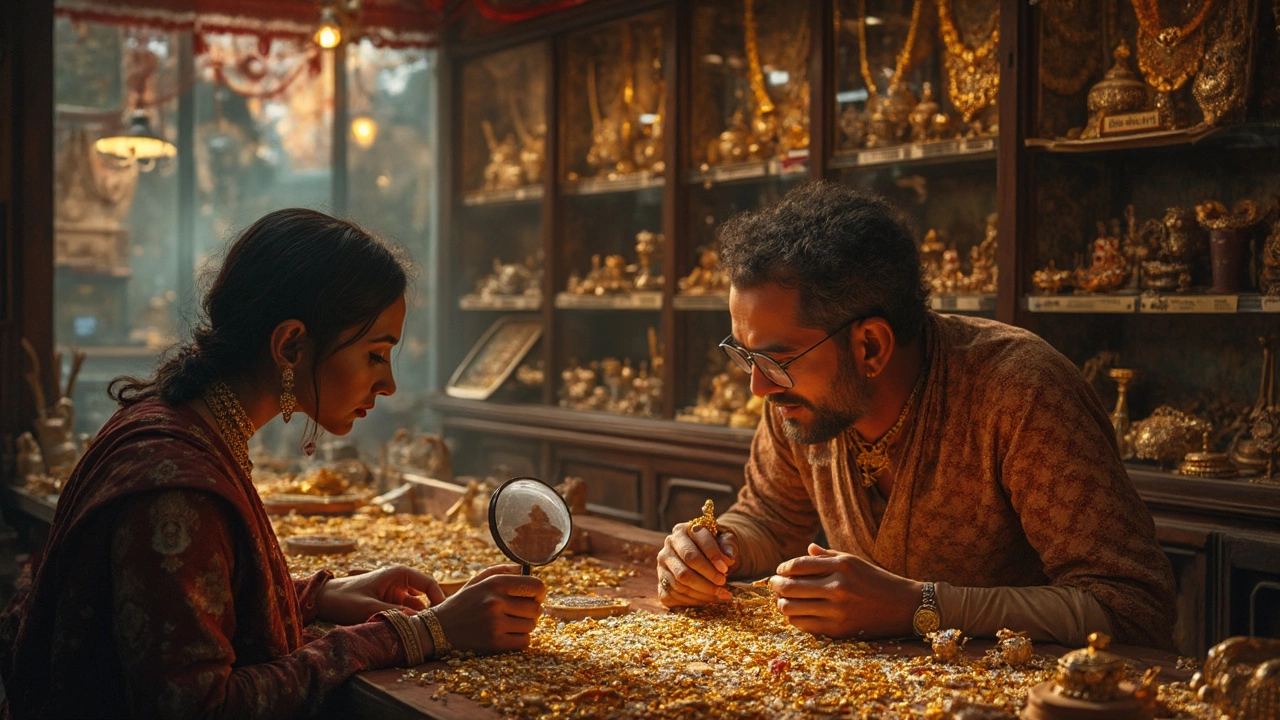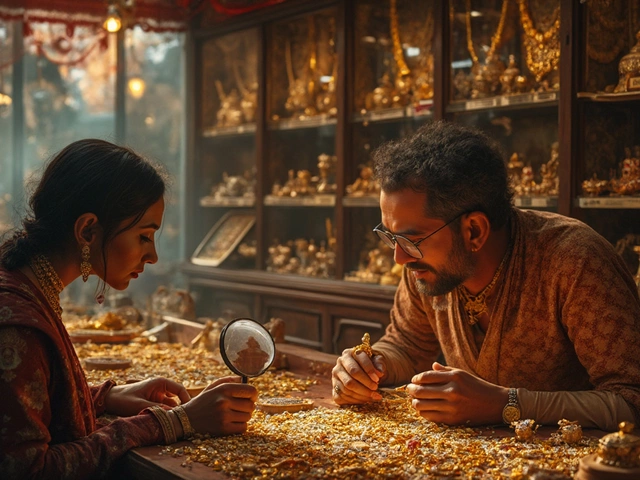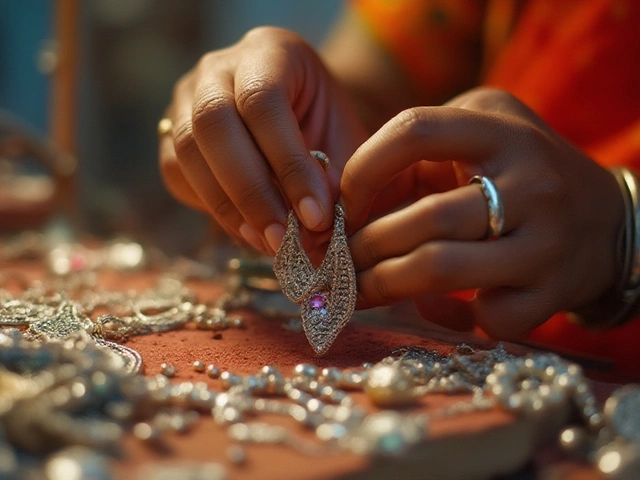Identifying Value in Jewelry: Quick Ways to Know What’s Worth It
Ever held a piece of jewelry and wondered if it’s truly valuable or just a pretty glass? You’re not alone. Most of us buy jewelry for looks, but the price tag matters too. Below are practical tips you can use right now to tell if a ring, necklace or bangle is worth its weight.
Basic Tests for Gold, Silver and Gems
First, grab a magnet. Real gold and silver won’t stick, while many cheap alloys are magnetic. Next, look for stamps. In India you’ll see marks like 875 (21K gold), 916 (22K gold), 925 (sterling silver) or 833 for silver. Those numbers tell you the purity. If you can’t see a stamp, the piece might be plated or counterfeit.
For gems, do a quick visual check. Real diamonds sparkle with sharp, white flashes, while imitation stones show a dull glow or colored tints. A simple scratch test on a ceramic tile can also reveal if a stone is glass or real. For pearls, rub the surface; genuine pearls feel gritty, not smooth.
Understanding Hallmarks and Resale Potential
Hallmarks are the gold standard for authenticity. In India the BIS (Bureau of Indian Standards) hallmark includes a BIS logo, purity mark, and a unique ID number. You can verify the ID on the BIS website to confirm the maker and the year of issue. A hallmark not only guarantees purity but also boosts resale value.
When thinking about resale, consider brand and design. Classic gold chains, timeless diamond studs and well‑known Indian brands tend to hold value better than trendy, heavily embellished pieces. Keep receipts and any appraisal papers; they make the resale process smoother and often fetch higher offers.
Another tip: weigh the piece. Gold and silver have specific densities. If a gold ring feels too light for its size, it’s likely hollow or alloyed with other metals. A digital jewelry scale can give you an accurate weight, which you can compare to the expected weight based on the purity and size.
Finally, trust your gut. If a seller can’t answer basic questions about purity, hallmarks or origin, walk away. Genuine sellers are happy to show certificates, explain stamps and let you test the item. By combining simple tests, hallmark checks and a bit of research, you’ll be able to separate real value from cheap sparkle.
Keep these steps handy next time you shop online or visit a market. Spotting value doesn’t have to be a mystery – a magnet, a stamp and a quick glance are often enough to protect your pocket and your style.
Antique and Vintage Jewelry: How to Spot Pieces That Keep Gaining Value
Not every old necklace or ring is a treasure in disguise—some actually lose value with time. This article breaks down the tricks and clues to help you spot antique and vintage jewelry worth holding onto. You’ll find out how to judge craftsmanship, why certain eras stand out, and what hallmarks and materials make a piece special. Get ready to glance beyond the surface and learn what really sets valuable jewelry apart. You’ll also pick up everyday tips to keep you from making rookie mistakes at the pawnshop or antique market.





